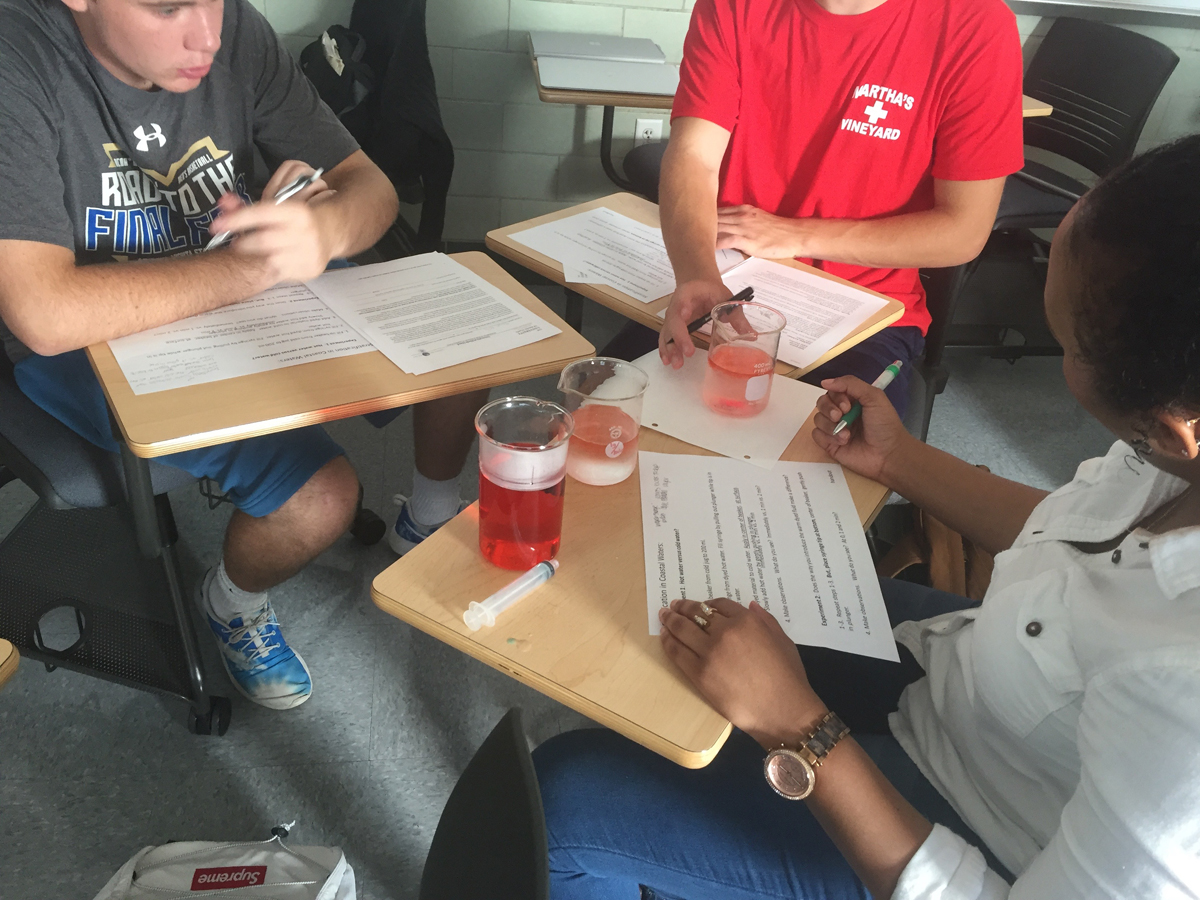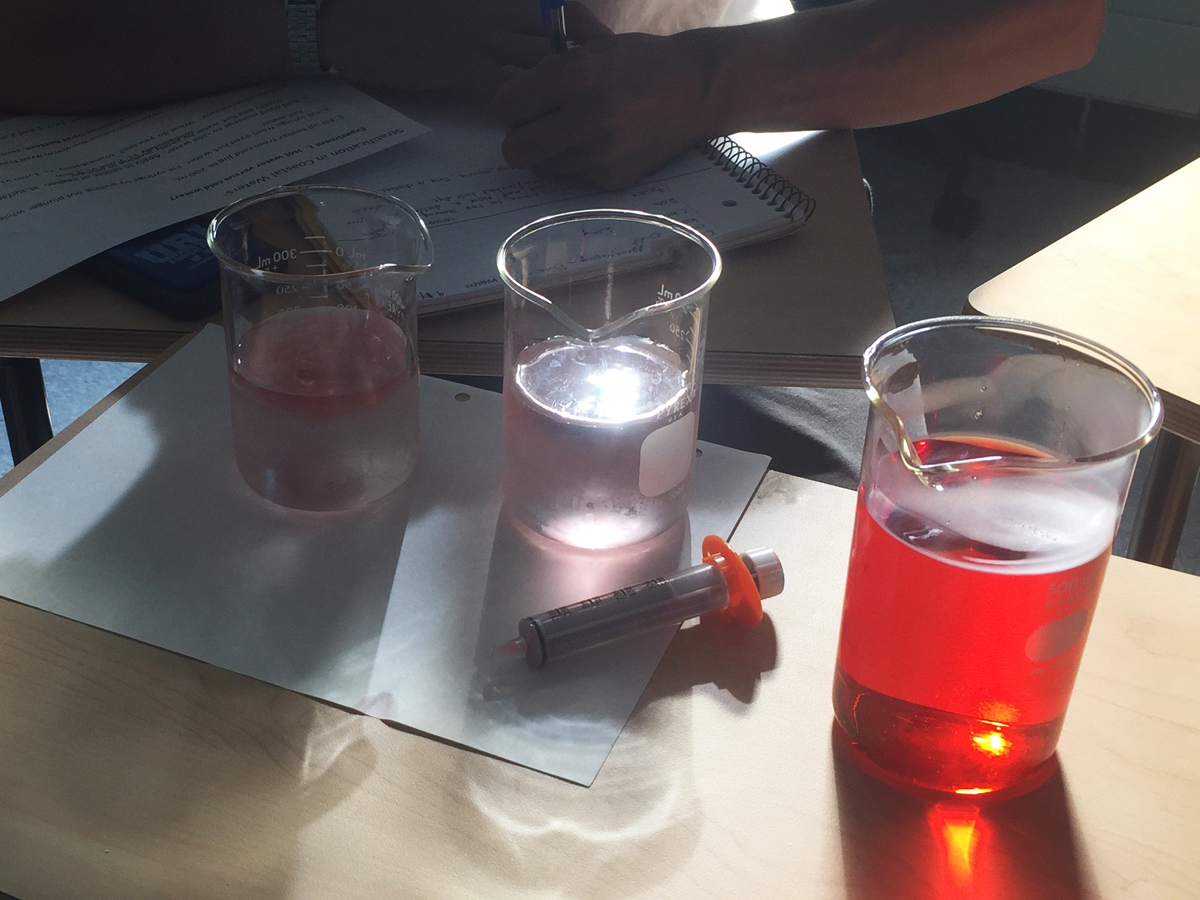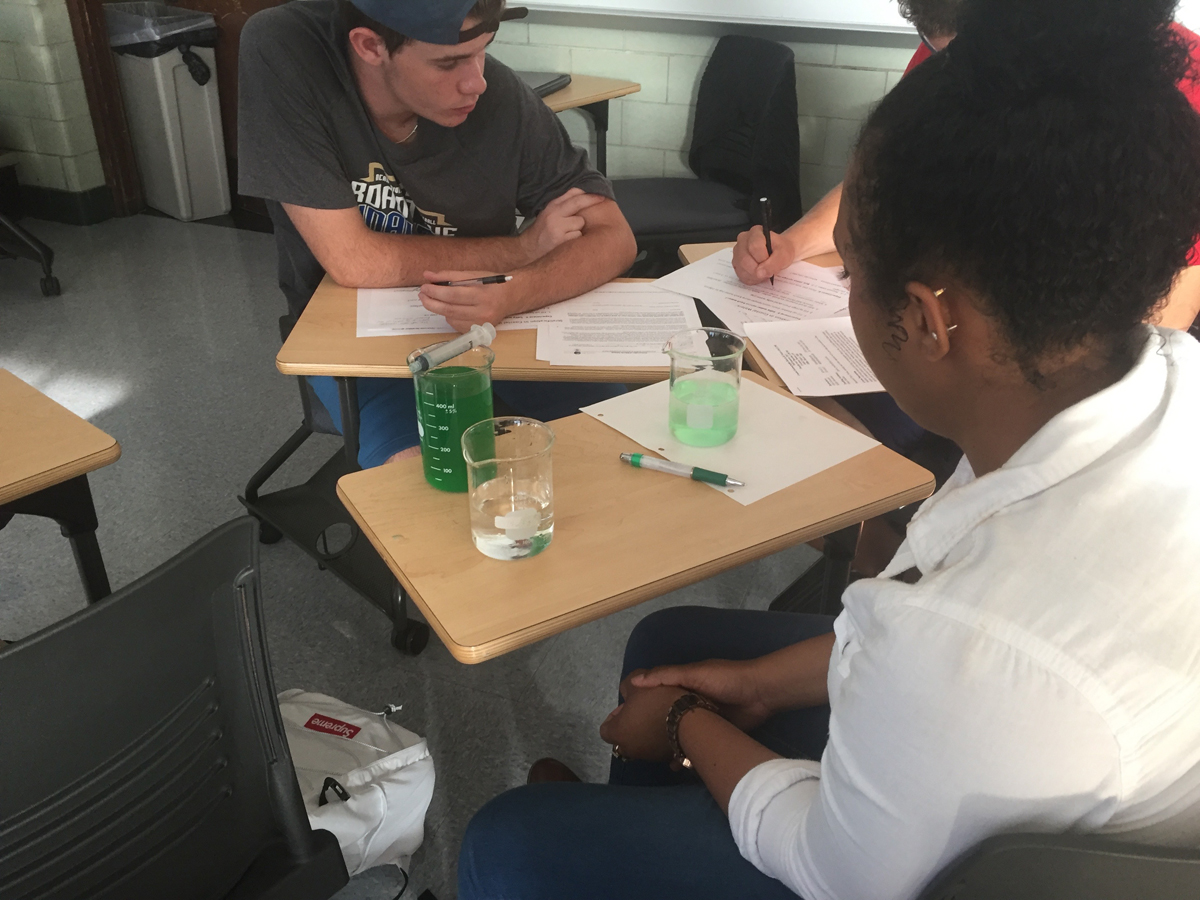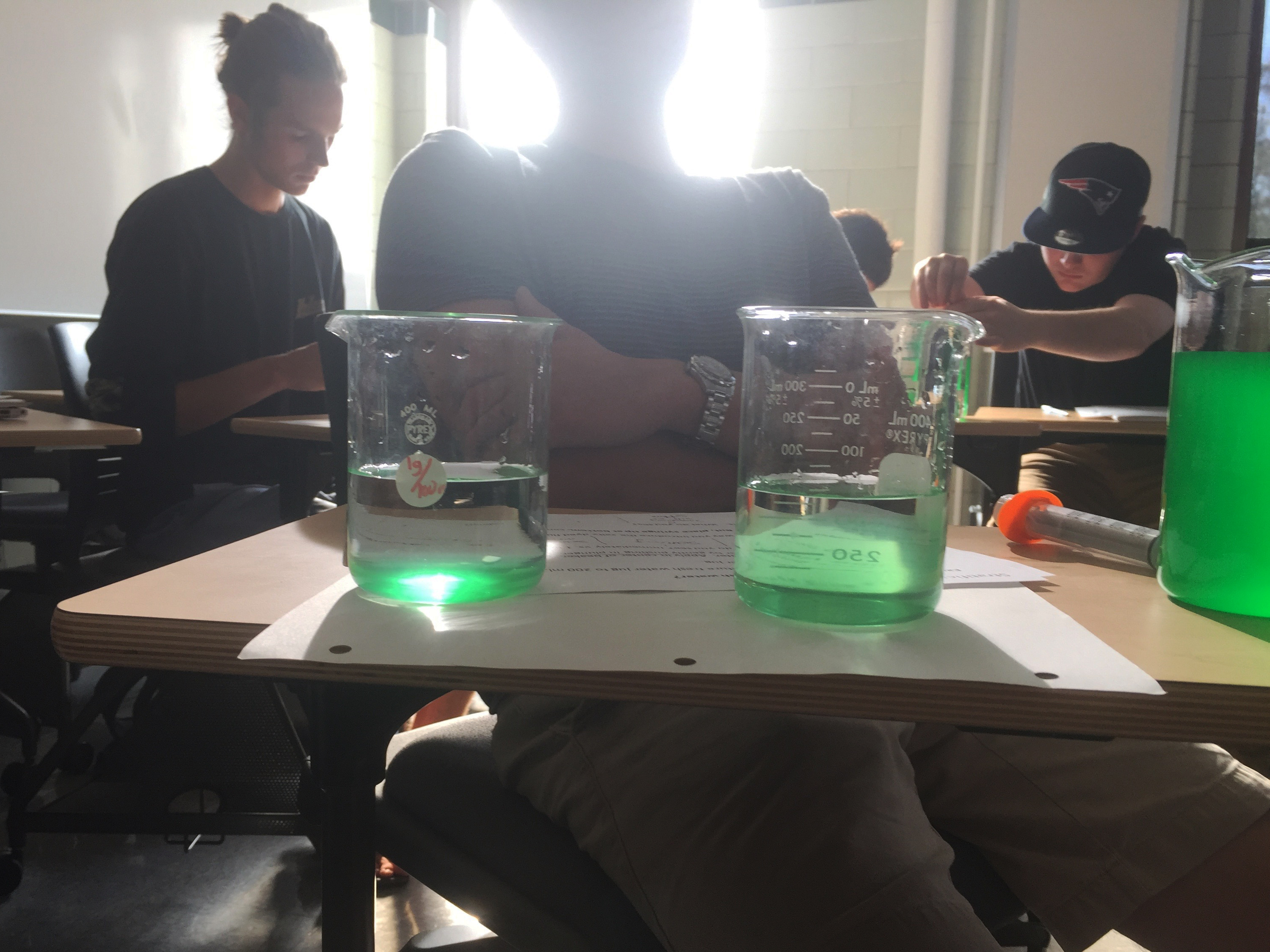OSG 150 Day 1 - September 7, 2017
Kathleen kicked off the course with an overview of the course objectives and an introduction of the other faculty support participants: Rob, Chris, Bruce, and Lucie (in that order).The students introduced themselves. We then turned to trying out some experiments in mixing discrete water types:
Kathy handed out the experiments instructions (paper - should we have electronic here?). Grace noted 40 degrees F for the cold water and 145 degrees F for the warm water on the white board.
Chris introduced stratification and density concepts
Rob asked one speaker from one of the three groups (students were in three groups of three each) to review the instructions for experiments one and two.
Rachel gave her interpretation of the instructions by saying she would get a beaker of cold water (Rob gave her pitcher of cold water) Then they would get a syringe and fill the cold water with a syringe's worth of hot water slowly (first from the top as experiment one and then from the bottom as experiment two). Rob said to be careful of the dye as it could stain.
We started capturing audio of what entailed (to be better scrubbed if possible).
Rob advised to do data capture and field reporting together in notes whenever doing an experiment. Chris talked about how to work together as a team.
Pictures were taken about a minute into the first and second experiments. The red, hot water was moving to the surface. Here's an example:

Pictures were taken about two minutes into the first and second experiments. The red, hot water was diffusing a bit. Here's an example:

Rob asked about the water that was collecting on the outside of the beaker - did it come from within the beaker through the glass? Gavin spoke out to say, "No, it was condensation".
More pictures were taken a minute into the third and fourth experiments. The green, salty water was moving to the bottom. Here's an example:

Pictures were taken about two minutes into the third and fourth experiments. The green, salty water was continuing to settle at the bottom. Here's an example:

Students asked questions were asked about the field trip (dress code) while we continued to watch the experiment.
All three teams gave a recap of what they saw with the four experiments: Jacob, Josh, and Mike gave the team reports.
"Hot water moved to the surface and condensation appeared outside the bottom half of the beaker (where the difference with air temperature was dramatic)"
Chris and Rob explained a plotting task: plotting the two layers on the vertical axis Chris reviewed the plotting results and discussed how to keep stratification going (keep adding heat to the top and cold to the bottom)
Chris introduced Grace to provide an overview of experiments 3 and 4 (salinity being applied at 200 parts per thousand - Dead Sea is approximately 35 parts per thousand)
Teams then gave verbal reports as to what they saw with experiments 3 and 4. "Experiment 3 took a lot longer to 'settle' (aka stratify) but green headed to the bottom in both cases. The die clung to the edge of the beaker a bit on the way down in experiment 3)."
Grace provided instructions on how to write up the experiments.
Chris suggested that they write down how to increase stratification (or weaken it).
Grace asked formally for where the stratification would head.
Gavin answered that "the saltiest water would fall to the bottom. Fresher water on the top". Loujean responded that "salt water is more dense". Grace reinforced how the stratification could be strengthened through increasing the salinity and keeping the fresh water salt free.
Rob talked through why we did our experiments the way we did them. He also discussed salt in the open ocean v. the Narrow River estuary
"Hands on better than static powerpoint presentation" (students who responded agreed)
Chris talked about the upper pond in the Narrow and how we might get stratified salt at the bottom to come up to the surface. Blowing on the water simulated wind which does bring bottom material up toward the surface (smells bad on a windy day)

